Date of interview: Saturday, 06/01/2013
We stopped by on our way to Uren Dam for the "2nd Gathering with Dam Lovers in Uren/Oshima Dam". As the name suggests, the Nagashino Dam is not a dam but a weir according to the definition of the River Law, since its bank height is less than 15 meters.
The Nagashino Dam is one of the "three most beautiful dams in Japan" along with the Hakusui Dam in Oita Prefecture and the Fujikura Dam in Akita Prefecture.weirIt is also one of the "Japan Society of Civil Engineers (JSCE) It is also a Civil Engineering Heritage Site recommended by the Japan Society of Civil Engineers (JSCE).
Hananoki Park Parking Lot
いつもここに駐車させてもらっているのですが、ホントにここでいいんでしょうか💦
fish pond
Adjacent to Nagashino Weir is a park called Hananoki Park, which also has a fishing pond and other facilities.
View of Nagashino weir over the fishing pond
Ducks in the pond? Geese? There are ducks and geese in the pond. It is around 9:00 in the morning and there is no one around, so you can have it all to yourself.
Levee (left) and conduit (right)
The rocky terrain is rugged, so be careful where you step. Some places may fall into the river, so be careful when visiting the site.
On the left is the embankment that dams the main stream of the Toyokawa River. The water dammed up here is then pumped downstream to the Nagashino Power Plant via the tunnel conduit through the gate on the far right side of the photo.
Nagashino Weir and Nagashino Power Plant are located in Shinshiro City, but they are related to Toyohashi City, which developed dramatically during the Meiji period. Toyohashi Electric Light Co., Ltd. was established by the Toyohashi Chamber of Commerce and Industry, and changed its name to Toyohashi Electric Co. in 1906 to sell electric power to support Toyohashi, which further developed after the Sino-Japanese War.
In 1910, the company established a subsidiary, Kansagawa Electric, and began construction of the Nagashino Power Plant to meet the tightening demand for electric power. The president at this time was Momosuke Fukuzawa.
The construction was headed by Taku Imanishi, chief engineer, a native of Ikeda-cho, Gifu Prefecture, and a recent graduate of Kyoto Imperial University.
Because the gradient of the Toyokawa River was too slow to allow a sufficient drop, a vertical-shaft water wheel, which had been put to practical use at the Niagara Hydroelectric Power Plant in the United States, was adopted, and after introducing a vertical-shaft water wheel made by the German company Foyt and a generator made by Siemens, the line was put into operation in March 1970.
At that time, the horizontal axis was generally used to arrange the turbine and generator horizontally, but at the Nagashino Power Plant, the water taken from the Nagashino weir was passed through a conduit and dropped directly under the weir to turn the turbine, and the generator was placed directly above the turbine, using a vertical axis. This method of power generation has since come to be known as the "Niagara method.
The power generation method is the Niagara method, but this conduit looks like Niagara Falls.
View of the downstream face of the weir from the right bank
This is the main weir. The red part is made of boards and steel frames to stop the water, but it looks like a gate of Chuden Red. It looks like a gate of Chuden Red, but it is off-limits.
Water conduits and overflows
This is the cascading overflow that attracts people so much. It is simply water overflowing from a conduit and flowing like a waterfall, but it seems to be an open culvert hollowed out of bedrock and shaped with man-made stones, and it is hard to tell how much of it is man-made stone. It looks like an overflow that makes use of natural rock formations, but it is so beautiful that one can't help but sigh just looking at it.
View of the levee from downstream
View of the dike from downstream. Overflows from both the left and right banks.
Although extreme care must be taken when visiting the site due to its rocky location, we encourage you to see with your own eyes the three most beautiful weirs in Japan and the JSCE's Civil Engineering Heritage Site of Japan.
Nagashino weir overflow painting
A video of the overflow has been compiled.
Nagashino Dam Specifications
| Location | Yokogawa, Shinshiro City, Aichi Prefecture |
| River Name | Toyokawa River system Toyokawa |
| Objective | P(Power generation) |
| Model | G(gravity-fed concrete dam) |
| Bank height | 8m |
| Bank length | 25.4m |
| Dam operator | Toyohashi Electric Co. |
| Year of launch | 1910. |
| Year Completed | 1912. |
Other facilities/observations
| Parking lot | ○ |
| Toilet | × |
| Park | ○ |
| PR Exhibition Hall | × |
| Fishing | ○○ (excluding no-take zones) |

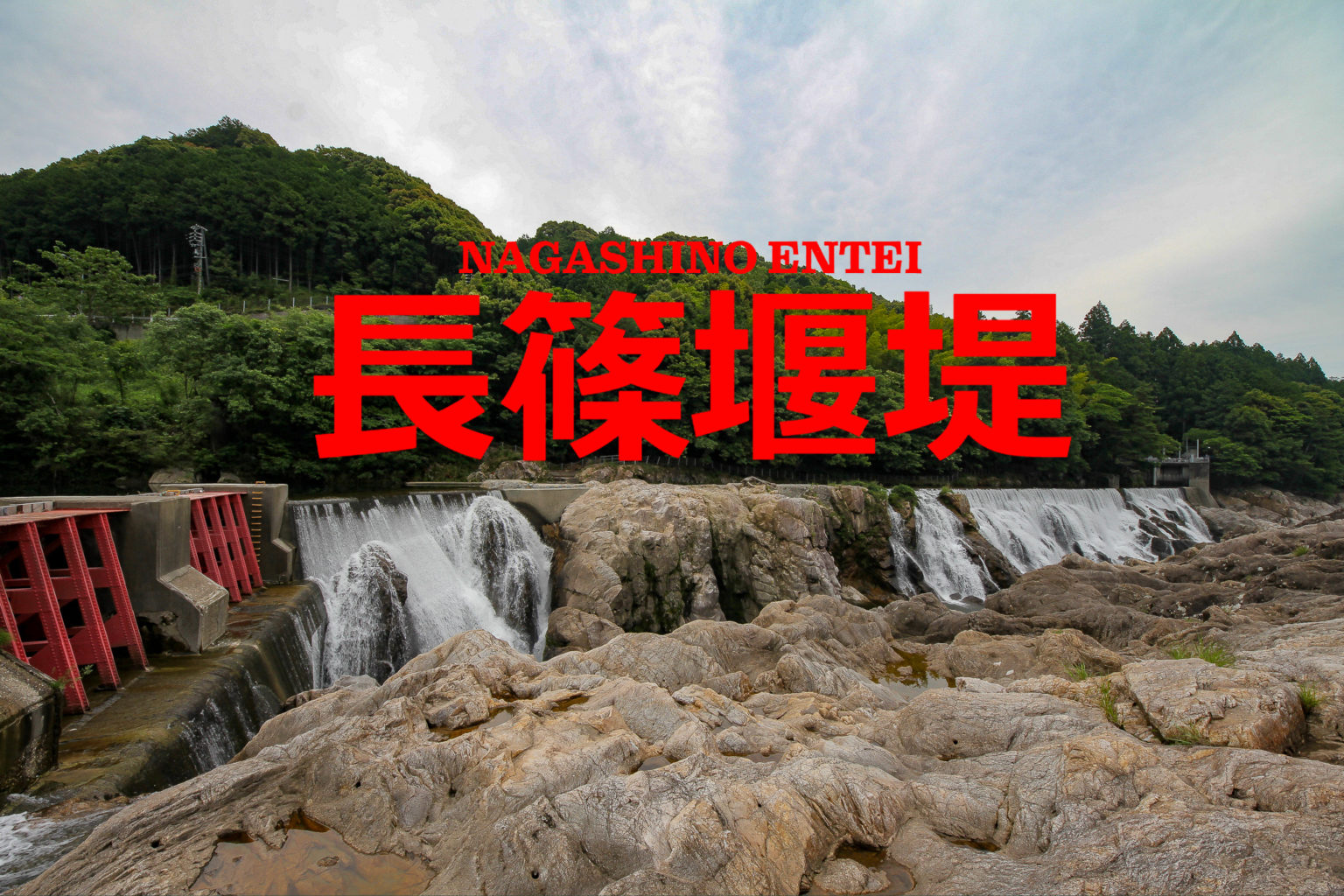
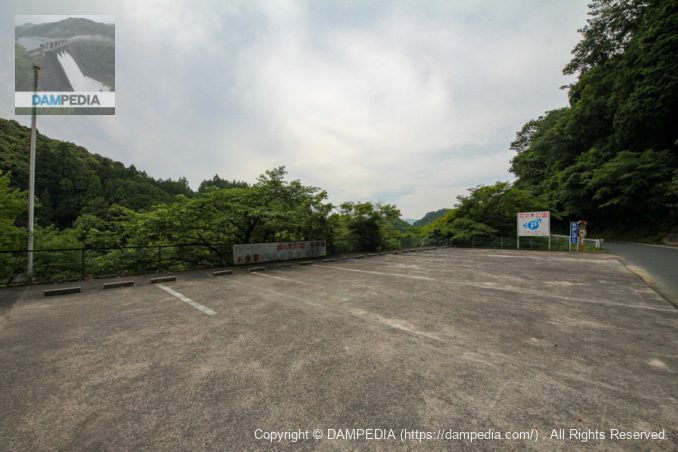
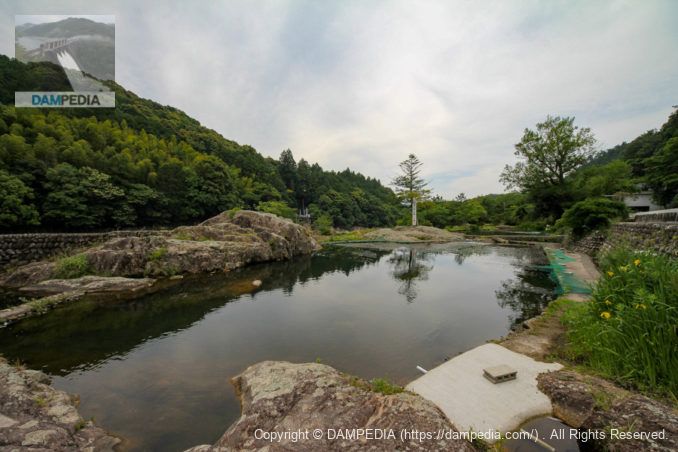
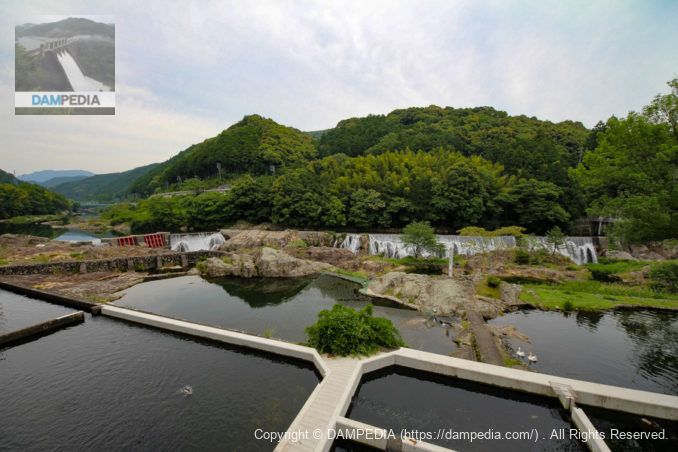
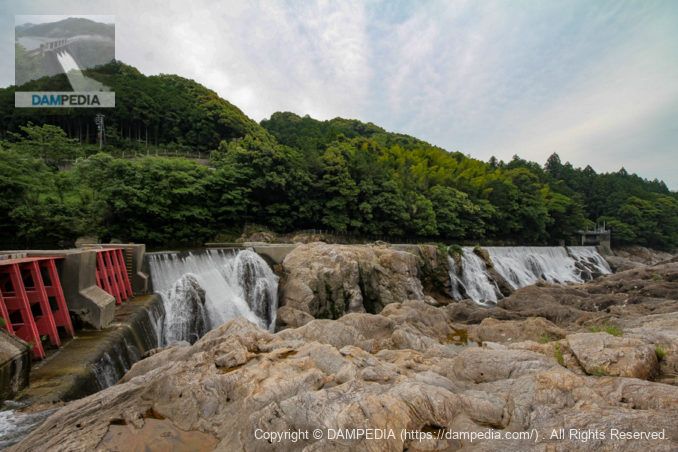
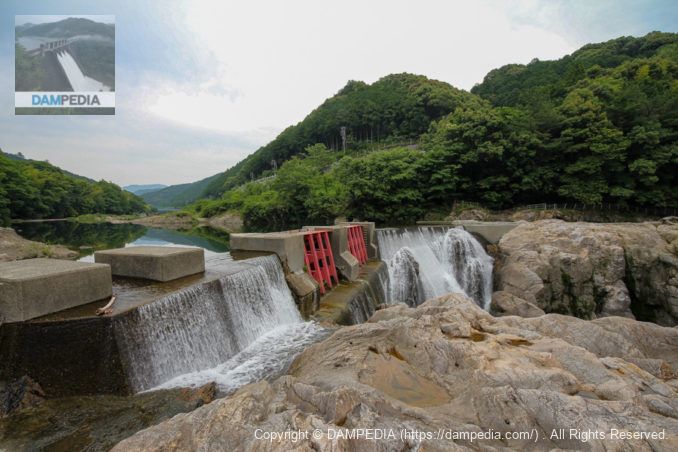


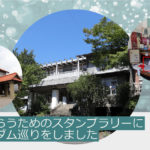

Comment